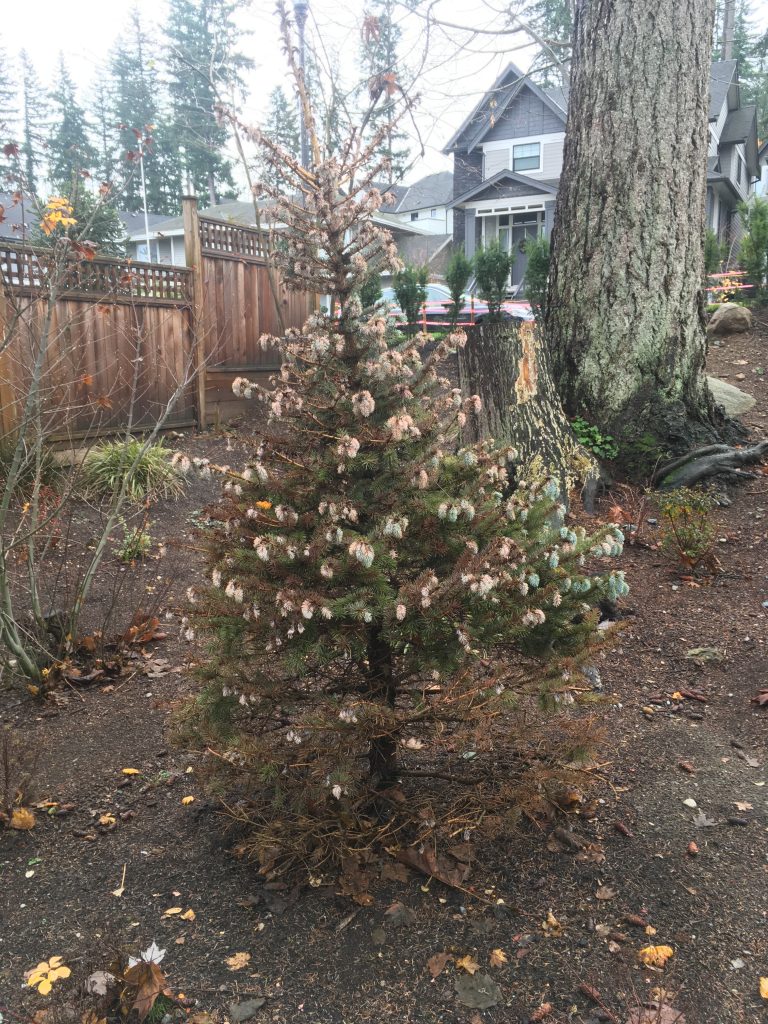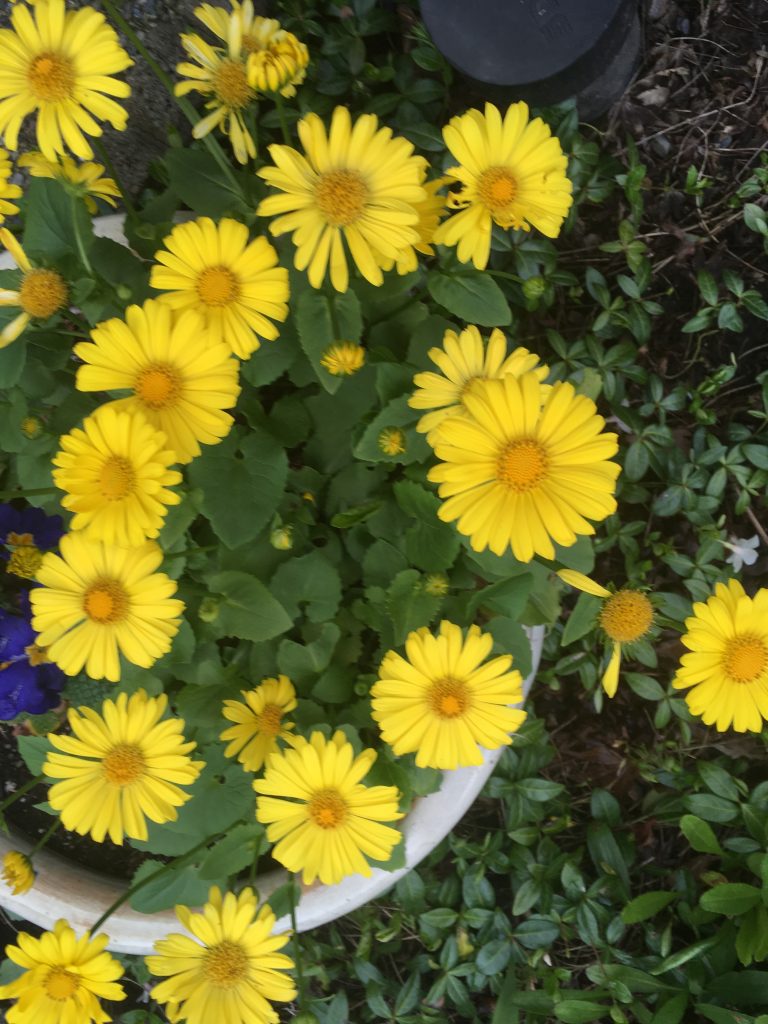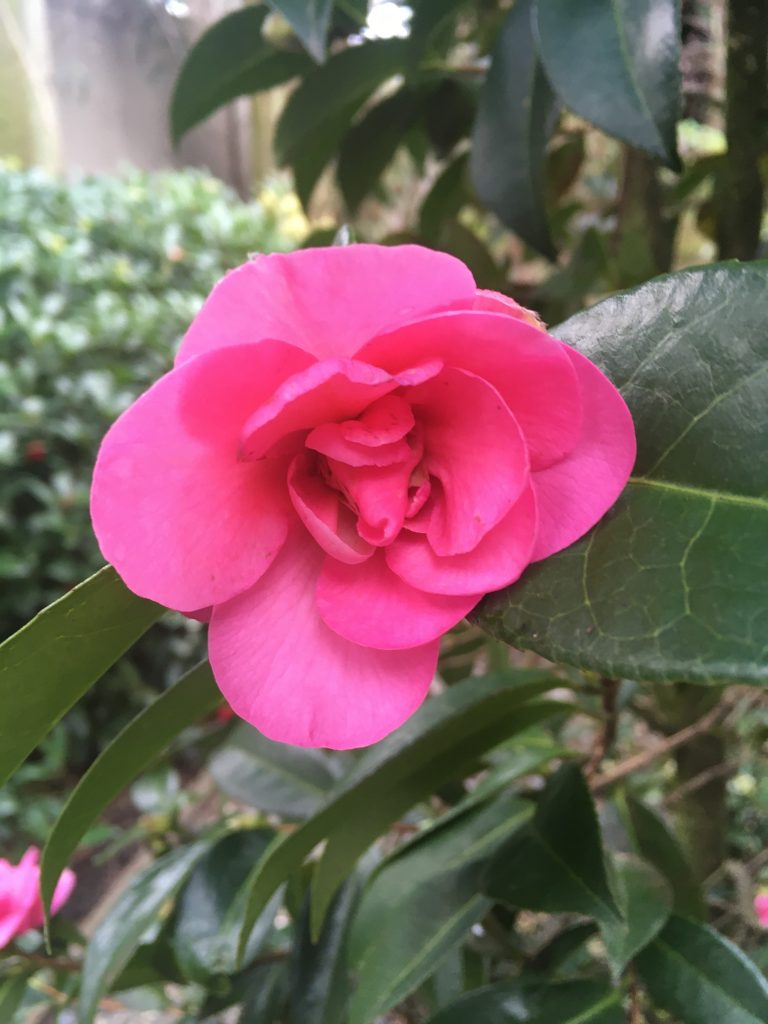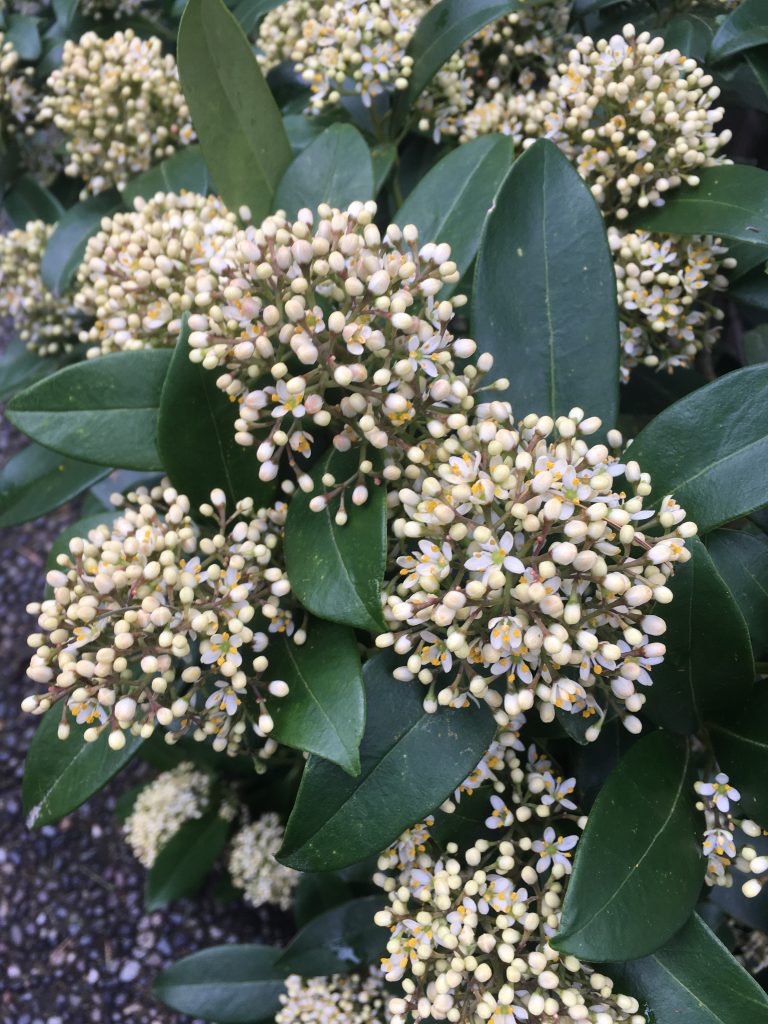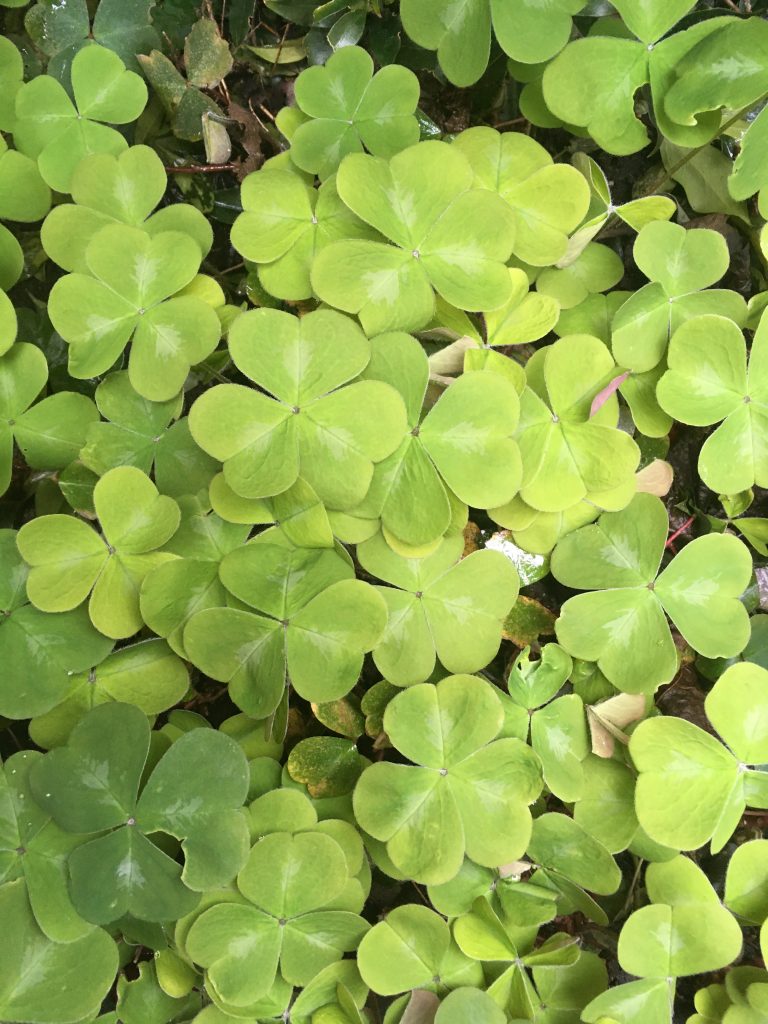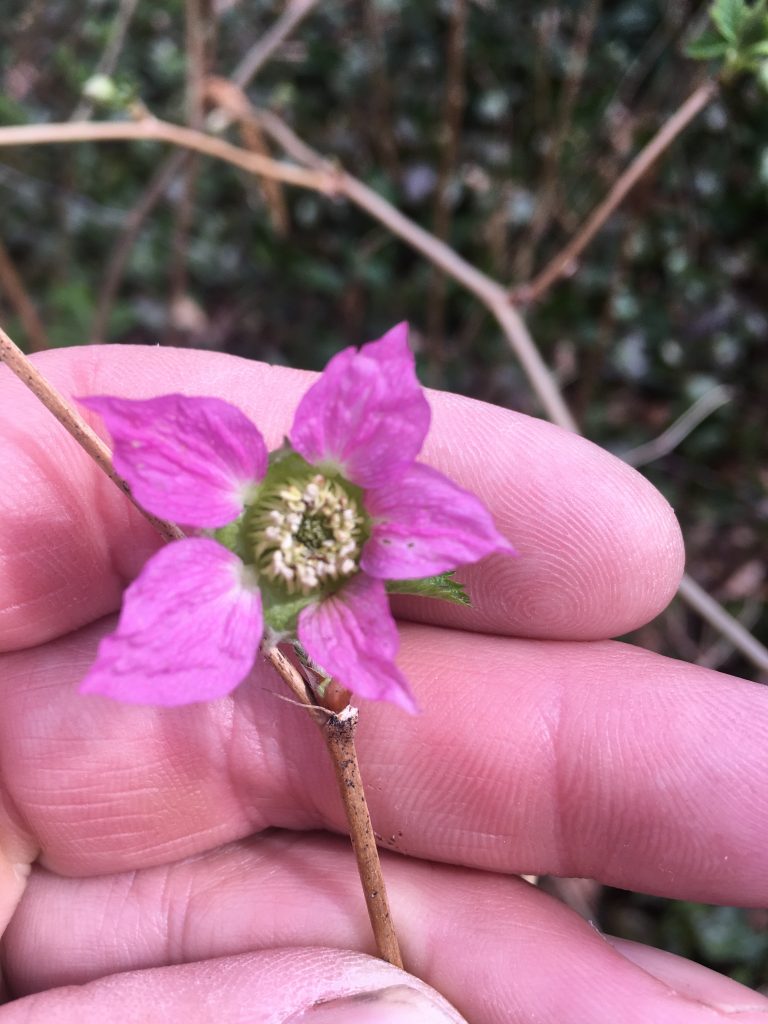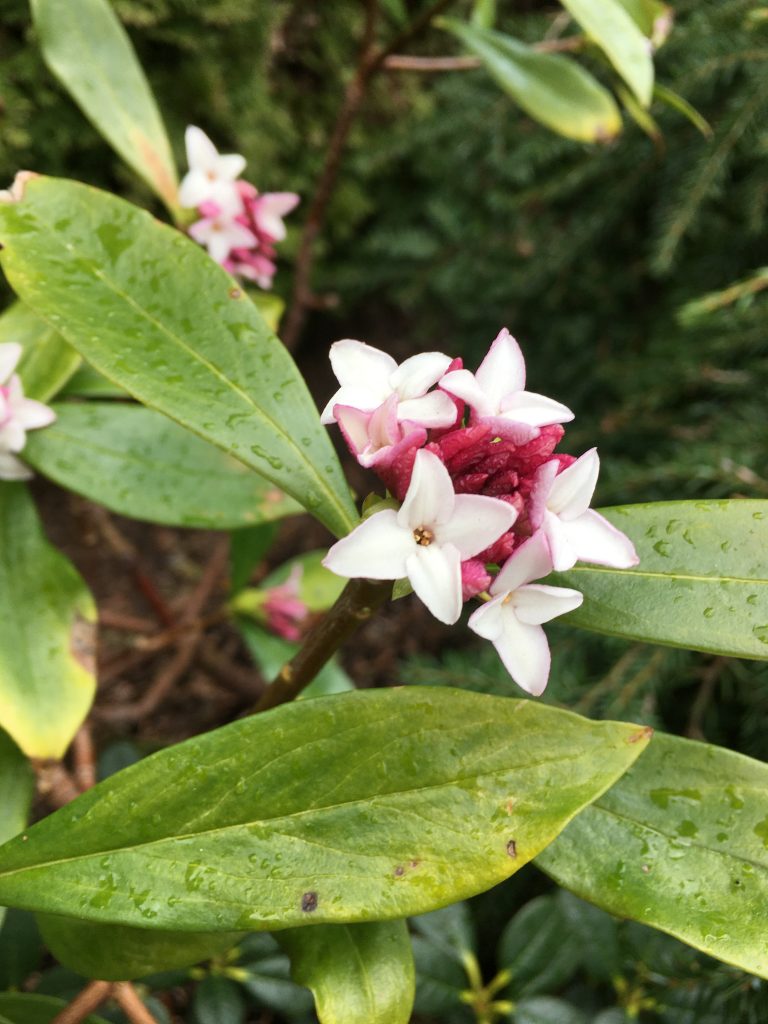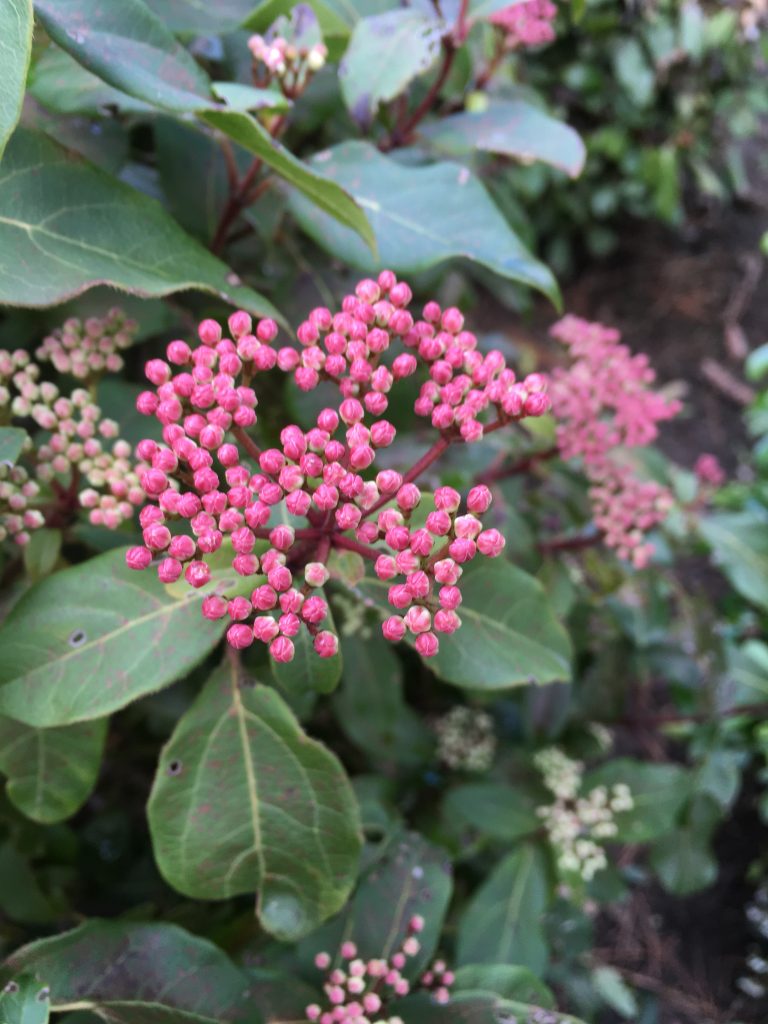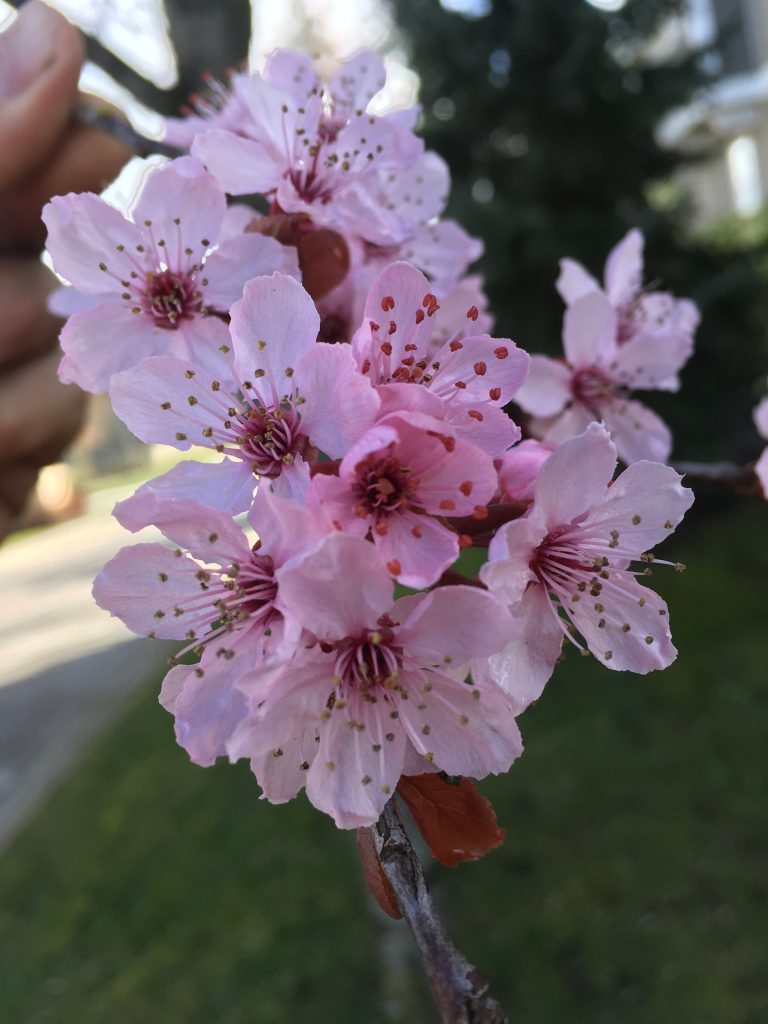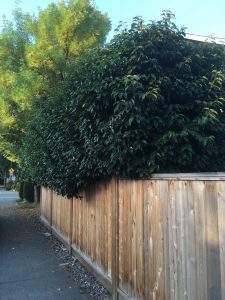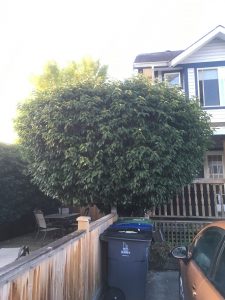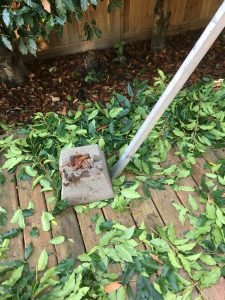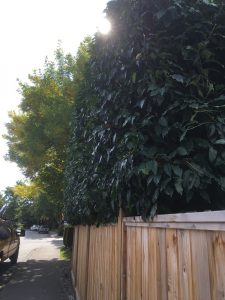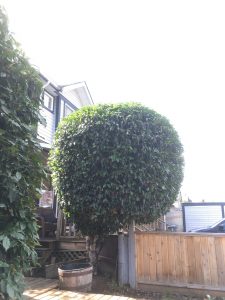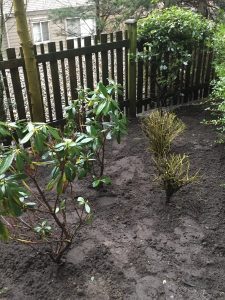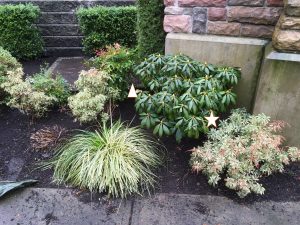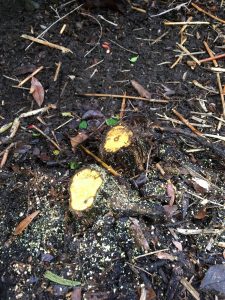Tight tops
Ok, so the main headline is a bit dramatic. It’s about cedar tops, not about a real rescue. The point of this blog post is that, unless it’s requested, all cedar hedge tops should have straight, tight tops. That’s it.
Now, there are exceptions, like my friend Anthony. He shears the top of his cedar hedge into a wave because he is a musician and the hedge top flows like a melody. I guess. I don’t really know. It’s definitely playful but an exception nonetheless.
Why I lose sleep

Sadly, this is the finished product of experienced landscapers. I suspect they ran in with articulating shears and buzzed down the tops with one or maybe two strokes without using a ladder. That just screams “I don’t care!”.
Cedar tops should have tight, straight lines on top. The top should match the fence line and run parallel with it. When I see the angled top, I lose sleep over it. What happened to producing world-class work?
The fix
I knew I’d have to fix this mess because sleeping well is important for landscape professionals. The cedars also look awful from the road. When I walked by, I noticed it right away.
Unfortunately, between the time this shoddy work happened and my fix date, new owners moved in. Now, I had to fix the tops and explain the horrendous duplication. Obviously, it takes time and effort to fix the tops. It didn’t help that the new owners had their backyard stuffed full of outdoor furniture; and the owner had a list of requests, most of which would have reduced his deciduous trees by fifty percent. It was a nightmare.
Use a ladder so you see the top and run your shears over the top back and forth, several times. If you’re lucky, you’ll see last year’s level clearly. Don’t rush it. Let the shears do the work as you pass over several times. This gives you the straight, laser-like look on top.
Note that only the cedar tops are done this way. The sides are pruned lightly so they stay nice and green, not brown and full of hole.
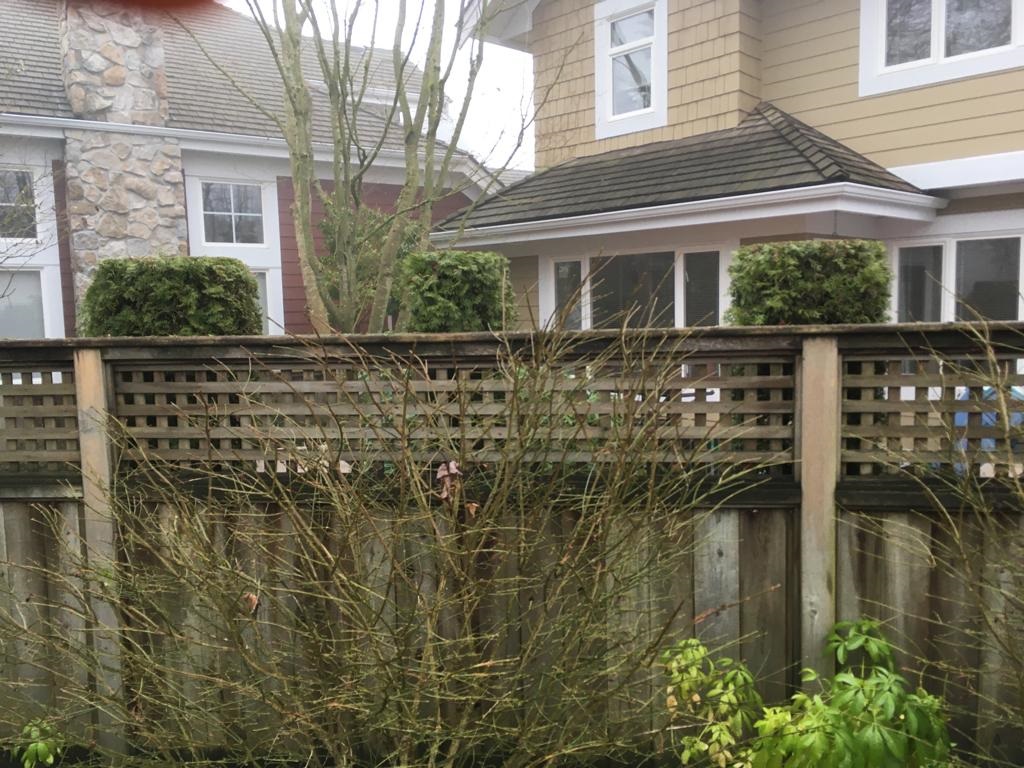
Now, after the fix I can sleep at night. It’s not perfect but it will do, considering the condition of the cedars and the sharpness of my shears. The key difference is that I care. I always make an attempt at diligence. I can’t just buzz it down without seeing the top properly, and walk away. That’s not me. That’s not Red Seal journeyman work.
Always make sure your cedar hedge tops are tight and straight.



